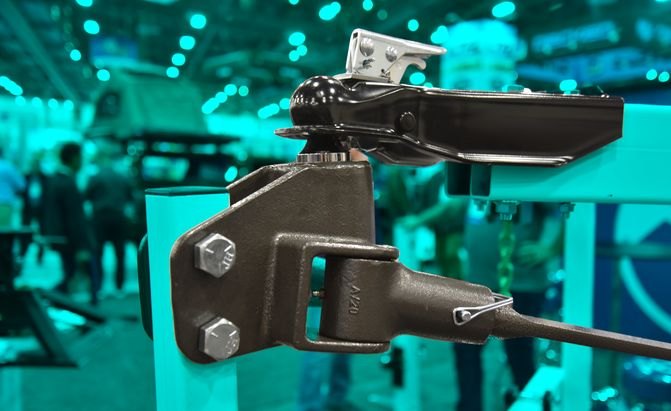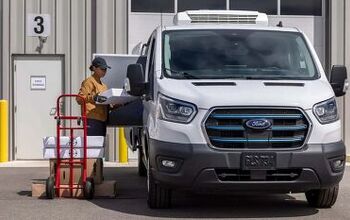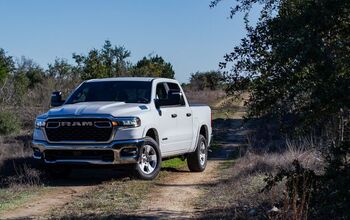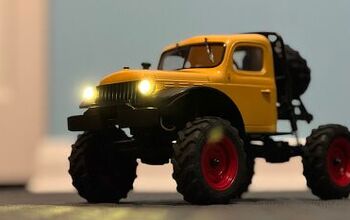The Best Weight Distribution Hitch to Control Your Load

If you have a heavy trailer to tow with your truck or SUV, you probably already have a Class III, IV or V receiver and hitch. But what you need to go with the receiver is a weight distribution hitch to level your rig and prevent sway.
A weight distribution hitch, which is also referred to as a sway-control hitch, anti-sway hitch*, or trailer equalizer, helps to distribute the downward force from heavy trailers across both of your axles.
It’s important for this downward force, referred to as tongue weight, to be distributed across the vehicle’s axles and the trailer’s axles, as it can put too much weight on the rear of your vehicle. Too much weight in the back is not only bad for your truck or SUV, it's bad for ride and handling. It can evenor contribute to vehicle control problems and damage your trailer receiver hitch.
There is a wide price range among weight distributing hitches, from a few hundred dollars to several thousand. A decent affordable model will probably be all you need if you’re towing a smaller trailer shorter distances, but you’ll find that people who tow large loads long distances tend to end up with more premium models in the long run. For this article, we’re only looking at weight distribution hitches under four figures.
Most weight distribution hitches come with a shank, which you can leave in your receiver, and tow without the arms or chains. However, that will lower both the tongue and maximum trailer weight, usually by about 40% (depending on shank length and drop). Still, it’s handy if you want to leave the components of your weight distributing hitch on your big trailer and not have to buy a second shank to use with a smaller trailer.
A weight distribution hitch can help keep you safe while out on the road and towing, so you’ll definitely want to read up on them before making your purchase. That’s why we’re going to go over some of the best weight distributing hitches on sale in this post. We’ll also talk about the different types of weight distributing hitches available today, what sets them apart, and which are best for which applications.
*These are actually a different type of hitch—see the Table of Contents for more.
Table of contents
- 1. Editor's Pick: Andersen 3344 No Sway Weight Distribution Hitch
- 2. B&W Trailer Hitches Continuum
- 3. EAZ Lift 1K Elite Bent Bar Weight Distributing Hitch
- 4. Fastway Equal-i-zer 4-Point 10,000-pound Sway Control Hitch
- 5. Husky Round Bar Weight Distribution Hitch with Bolt-Together Ball Mount/Shank Assembly
- 6. Husky Center Line TS with Spring Bars
- 7. CURT Round Bar Weight Distribution Hitch with Sway Control
- 8. Camco ReCurve R6 Weight Distribution Hitch
- 9. Blue Ox BXW1500 Weight Distributing Hitch
- How Does a Weight Distributing Hitch Work?
- What are the Different Types of Weight Distributing Hitches?
- Parts of a Weight Distribution Hitch
- What Weight Rating Will I Need?
- What is the Difference Between Weight Distribution and Sway Control?
- Do I Need a Weight Distribution Hitch?
- Weight Distribution Hitch Tips and Resources
- Recent Updates
1. Editor's Pick: Andersen 3344 No Sway Weight Distribution Hitch
The 3344 No Sway Weight Distribution Hitch from Andersen Hitches is one of the best weight distribution hitches on sale today.
This weight distribution hitch differs from others that are of the round bar and trunnion bar type. It features chains in place of spring bars and a damper built into the hitch head, which can help remedy trailer sway and also any trailer bouncing you may experience. You can also easily tighten or loosen the chains and damper with a nut.
Andersen Hitches' design is lightweight, coming in at under 60 pounds, is easy to install, and promises to provide a smooth and extremely quiet ride as you tow. This is the four-inch drop, 2-5/16-inch ball model; it's also available with an eight inch drop in both two- and 2-5/16-inch balls. The larger ball size gives you a 10,000 pound gross trailer weight and 1,400-pound tongue weight. Made in the USA, this recommendation comes with a limited lifetime warranty.
It's important to get the installation right the first time, but after that, it's an easy design to adjust as your trailer weight changes.
While a bit pricier than other weight distribution hitches, this hitch has a unique design that makes it one of the best weight distribution hitches on sale today.
Pros | Unique design ensures quiet and smooth operation, lifetime warranty, made in the USA |
Cons | You pay for quality, not compatible with surge brakes, less clearance than trunnion hitches |
2. B&W Trailer Hitches Continuum
The B&W Continuum weight distribution hitch functions differently from anything else on this list. The Conuum doesn't have heavy and noisy brackets for you to install, and there are no bars to pry on. Instead, it uses hydraulics and composite spring bars.
B&W's composite bars are far lighter than steel bars, but they're five times more flexible and have the strength of steel. Instead of a pry bar, the hydraulic pressure generated by the hitch's small pump raises and lowers the bars. Pump it until you've moved enough weight to the front axle, twist a valve, and dump the bars. Once you have the right pressure, a gauge on the side lets you hit the same number every time.
It's quicker to set up, and you don't need to walk around or climb over the hitch to get the right weight distribution. The hydraulic system means you can quickly find the right pressure for different trailers, different tongue weights, and different load positions.
Pros | No heavy bars to force into place, highly adjustable, preserves load capacity |
Cons | It's an expensive hitch |
3. EAZ Lift 1K Elite Bent Bar Weight Distributing Hitch
With a 10,000 pound GTWR rating and 1,000 pound tongue weight rating (it's also available in 600-, 800- and 1,200-pound ratings), this budget-friendly weight distributing hitch should prove to be plenty strong for many consumers. Round bar type weight distribution hitches are easier to set up, but aren't as heavy duty or as good at mitigating noise and trailer sway and bounce as Andersen or trunnion bar type kits, which means they won't be your first choice for bad roads. What it lacks in refinement it makes up for in price, however.
If your trailer isn't too heavy and the roads around you are smoothly paved, the EAZ Lift Elite 1,000 pound weight distributing hitch is an inexpensive option that we'd recommend. It's also available in tongue weight ratings of 800 and 1,400 pounds, with and without a shank, in case you have one already that you'd prefer to use.
Camco provides a handy chart to help you figure out different weight ratings depending on configuration.
Pros | Inexpensive, heavy gauge, variety of tongue ratings, five year warranty |
Cons | No hitch ball included, not ideal for rough roads |
4. Fastway Equal-i-zer 4-Point 10,000-pound Sway Control Hitch
The Equal-i-zer 4-point Sway Control Hitch is a trunnion bar type weight distribution hitch available in a wide variety of tongue weight and gross trailer weight ratings. It is also available in different sizes, making it an appropriate choice no matter the height of your hitch receiver.
The Equal-i-zer hitch will work with almost all bumper-pull trailers, and trailers with hydraulic surge brakes. The product comes complete with a hitch ball, so you don't have to purchase your own separately if you don't already have the appropriate type.
Users report this weight distributing hitch is easy to install, works very well to mitigate sway, and is ideal for those who are towing very long trailers. It will take some more adjustment the first time you install it, or when changing trailers, and may be louder than chain-style equalizer hitches, too. The only downside here is the price—it's a bit more expensive than a comparable round ball type weight distributing hitch, and more than an Andersen style one, as well. Fastway has been making automotive accessories in the USA for over 75 years and offers a limited lifetime warranty. This expensive weight distributing hitch justifies its price tag with great on-road performance.
Pros | High quality, great for long trailers, variety of weight ratings and sizes available |
Cons | Premium price, needs more adjustment, louder than Anderson chain-style |
5. Husky Round Bar Weight Distribution Hitch with Bolt-Together Ball Mount/Shank Assembly
This round bar type weight distribution hitch from Husky has a 1,200 pound max tongue rating and 12,000 pound GTWR, making it good for those with heavier trailers or RVs to tow.
The hitch also features eight inches total of height adjustment, making a good pick for people with lifted trucks or several different trailers. Like many other weight distribution hitches, though, a trailer ball is not included in this package, so you'll have to purchase your own if you don't already have one of the right size.
Husky promises this weight distribution hitch is easy to install and simple to use. Some users weren't happy with the flimsy packaging the hitch came in, but otherwise, this should prove to be a solid weight distribution hitch for the truck or SUV owner who doesn't want to break the bank. We'd consider this a good entry-level weight distribution hitch, with the bonus of a limited lifetime warranty.
Pros | Inexpensive, easy to install and use, good warranty |
Cons | Flimsy packaging, not as well-built as some more expensive weight distribution hitches |
6. Husky Center Line TS with Spring Bars
This trunnion weight distribution hitch kit from Husky has a very high tongue weight rating of 1,200 pounds and a GTWR of 12,000 pounds.
The manufacturer claims their design is quieter than many other similar kits on sale today, so you won't be bothered by squeaking as you drive along. It also comes with a 2-5/16-inch trailer ball hitch. forged shank, and all other hardware you'll need to install it. This product is also well-priced for its heavy-duty weight ratings and comes with easy-to-follow instructions for installation.
One common downside that users of this product report is the weight, although it's not much heavier than comparable hitches. However, it is awkward to install and to move around when it's not attached to your vehicle. A forged 1035 steel top plate and hardened 1045 steel trunions resist fatigue over years of use.
Pros | Well priced, good quality, high weight rating |
Cons | Tricky installation |
7. CURT Round Bar Weight Distribution Hitch with Sway Control
A well-known brand in the towing industry, CURT offers several different weight distribution hitches, based on your needs. So if this recommendation doesn't meet your specific requirements, make sure to check the company's other offerings.
This one in particular is a round bar weight distribution hitch (17063) designed to offer a smoother ride and improved control by distributing the the tongue weight of the trailer and leveling the load. This weight distribution hitch also comes with a trailer sway control bar. An integrated lubrication system contributes to smooth, quiet towing.
It features 31-3/16-inch long forged steel spring bars and it's rated to tow 10,000 to 14,000 pounds gross trailer weight and 1,000 to 1,400 pounds tongue weight. It comes with an adjustable two-inch shank and a pre-torqued 2-5/16-inch trailer ball. CURT also includes a sway control damper in this kit.
All of this features a durable carbide black powdercoated finish for durability and corrosion resistance.
Pros | Reputable brand, intcudes sway control, 14,000 lbs max gross trailer weight |
Cons | Install requires drilling, complicated instructions |
8. Camco ReCurve R6 Weight Distribution Hitch
The Camco (makers of EAZ Lift) Recurve R6 Weight Distribution Hitch is a round bar type weight distribution kit with a 1,000 pound tongue weight and 10,000 pound GTWR. This kit comes with everything you'll need to put the hitch on your truck or SUV, including a hitch ball and cover. It's designed to have the advantages of a round bar weight distribution hitch without the low clearance issues, and uses trunnion style brackets.
Camco's 48733 Recurve R6 comes with a premium price, materials, and premium features, like top-loaded spring bars for increased clearance; auto-disengage for sharp turns; and manual disengage with a simple toggle for rough or icy roads.
While the construction of this product is of good quality, some users say it's hard to install due to the vague instructions. If you are going to install it yourself, you may want to research online for more detailed installation instructions or a how-to video.
Pros | Unique design, heavy duty construction, great warranty support |
Cons | Complicated installation, higher price |
9. Blue Ox BXW1500 Weight Distributing Hitch
The Blue Ox Weight Distributing Hitch is a beefy, heavy duty trunnion hitch with a 1,500 pound tongue weight rating and a 15,000 pound GTWR. This kit will prevent trailer sway and ensure your truck or SUV retains a soft, smooth ride even when towing heavy trailers. The manufacturer claims it's near-silent when in motion and comes with a pre-adjusted head so it's ready to use out of the box.
If you're serious about towing, this is an ideal weight distributing hitch. Some users say the sway bar chains are hard to adjust, however you don't have to take them off when you are reversing your vehicle like some other weight distributors.
While on the pricy side, this weight distributing hitch is a high-quality product that's aimed at the user who tows heavy trailers frequently.
Pros | Very heavy duty, well made, includes everything you'll need |
Cons | Expensive, needs big sockets for installation |
How Does a Weight Distributing Hitch Work?
A weight distributing hitch uses leverage to spread the weight of the trailer from just the hitch to the whole tow vehicle. A trailer without a weight distributing hitch will focus all of its weight onto the small surface area of the hitch ball and shank. This can cause the rear end of your truck or SUV to sag, which may make it susceptible to trailer sway and bounce, and reduces your ability to remain in control of the vehicle when traveling.
A weight distributing hitch is specially designed to spread the weight of your trailer to a larger surface area, reducing rear end sag and helping to keep the trailer even and in line with your vehicle. They can also help with cornering stability when towing, when directing the weight of the trailer to one side of the vehicle.
Think of it this way: Take a frying pan with a handle on it and press down a half inch out on the handle. If the pan is your vehicle, where you're pressing down is like the weight of a trailer on the hitch, which sticks out a little bit from the end of your vehicle. Adding the arms of a weight distributing hitch is like keeping one finger pressing down where it was but lifting up on the end of the handle with your other hand. Now, you're pressing the front of the pan (your car) down, too.
The other thing a weight distributing hitch can help with is sway control—fishtailing side to side. Proper weight distribution already helps with trailer hop, which can lead to sway. The arms of a weight distributing hitch resist side to side motions. A recent Cal State study showed they are very effective at controlling sway in extremely unsteady loads.
What are the Different Types of Weight Distributing Hitches?
As we mentioned above, there are three types of weight distributing hitch: round bar, trunnion bar, and Andersen. Round bar and trunnion bar weight distribution hitches perform about the same, but trunnions are able to handle higher weights and work best when the coupler is on the bottom. Round bars work great with top mounted couplers but have lower clearances.
Round Bar Hitches: A round bar weight distribution hitch uses round-shaped sway bars that attach to the trailer ball mount and assembly. They don't deal with bumps and potholes as well as an Andersen style kit, but will work just fine for most applications.
Trunnion Bar Hitches: A trunnion bar kit looks similar to a round bar kit, except the sway bars are straight, square in shape, and don't require a clip to be fastened to the receiver.
They are more difficult to adjust the height of the head on than a round bar kit, but provide more ground clearance than round bar type kits. Many kits use bars that have a hybrid round and square profile.
Andersen Hitches: Instead of using a sway bar, an Andersen style hitch uses dampers and chains to help reduce and mitigate trailer sway and bouncing. A nut is also used to tighten the chains and dampers so you don't have to mess around with chains. This hitch design helps to reduce trailer bounce in addition to sway.
We'd focus less on the type of hitch when shopping and more on the tongue weight rating and GTWR. As long as your weight distributing hitch has the correct weight rating for the trailer you are towing and fits your receiver properly, you should be good to go.
Parts of a Weight Distribution Hitch
Weight distribution hitches are elegantly simple in concept, using leverage to spread the trailer's tongue weight to the tow vehicle's front wheels through a pair of bars. You can accomplish this with several different designs (see above) of varying complexity, but the core concept is the same. These are the parts you'll find on the most common bar-type hitches, although different manufacturers may have different names. We've tried to include the most common, and a round bar hitch is shown.
In an Anderson hitch, you have tension chains in place of the arms (4); and an anti-sway assembly built-in to take the ball as part of the riser (2). Trunnion-style weight distribution hitches either hook directly to the brackets (5), or use short bars.
Parts of a Weight Distribution HitchPhoto Credit: EAZ Lift
- Shank. This goes into your hitch receiver to connect everything to the tow vehicle.
- Riser. These come in different lengths and adjust the height of the hitch relative to the trailer.
- Hitch head and ballmount. The hitch ball attaches to the top of this equalizer, and the bars (usually) into the bottom. Also called an equalizer head and trunnion head.
- Spring bars. These are round spring bars; trunnion spring bars come straight out of the equalizer head (3), without a curve.
- Snap-up or lift bracket. This is what hooks onto the trailer tongue.
- Lift-up or snap-up chains. The spring bars pull down on these. Some hitches use solid spring bar links or jacks here, and trunnion-style weight distribution hitches often don't have anything between the spring bars (4) and brackets (5).
Photo Credit: EAZ Lift
- This whole assembly is the snap-up bracket, lift-up bracket, or anti-sway bracket. In a round bar weight distribution hitch it hooks over and is bolted to the trailer tongue arms. In a trunnion bar system a frame mounting bracket will be bolted around the trailer tongue arms completely,
- Handle.
- Safety pin.
- Set screw. This clamps on to or may be drilled and bolted into the trailer tongue arms.
- Lift bracket hook. This holds the chains in place under tension. Most installations call for at least five links of chain.
What Weight Rating Will I Need?
There are two different weight ratings used when talking weight distributing hitches: tongue weight and gross trailer weight.
The tongue weight of a trailer is how much downward force it puts on your trailer hitch receiver when it's hitched up. The gross trailer weight rating (GTWR) is how much the trailer weighs in its entirety.
Having too much tongue weight is obviously bad, but having too little tongue weight can also cause trailer sway problems. Ideally, you'll want your tongue weight to be 10 to 15 percent of your GTWR so your trailer sits evenly with your vehicle. If your trailer weighs 10,000 pounds, you'll want to have a tongue weight rating of around 1,000 pounds. Getting tongue weight at the 10% mark or a little more is the single biggest thing you can do to prevent trailer hop and fishtailing.
Having the proper weight rated hitch is the most important aspect of shopping for a weight distributing hitch .Even the best weight distribution hitch is not a substitute for an adequately sized tow vehicle, but but will make towing safer in all conditions.
What is the Difference Between Weight Distribution and Sway Control?
Weight distribution hitches help control trailer sway—fishtailing—but only as a side effect of helping equalize weight. A trailer sway control kit is even simpler. It's basically a big shock absorber that connects to the hitch ball area on one side, and the trailer tongue on the other. Most weight distribution hitches have a hole to install a second ball hitch just for an anti-sway device, and a sway bar kit will include a plate to bolt or weld onto the trailer, as well as both balls. You'll probably have to drill and bolt, at least, to install one, but they're easy to take on and off.
Inside the sway bar is either a friction material—like brake pads—or sometimes a hydraulic cylinder. Both do the same thing, resisting turning at the hitch point. This literally takes the energy out of the motion, so small effects can't get going and become big ones.
Do I Need a Weight Distribution Hitch?
Photo credit: Utah Department of Public Safety
If you don't want to void your truck or SUV's warranty, yes. Most manufacturers actually require them at a certain gross weight. For half-ton and midsize trucks the rule of thumb is you need one at 5,000 pounds total load, including any cargo in the tow vehicle, going up as you move into a 3/4- or one-ton truck, but an owner's manual will specify. Almost all towed campers of any weight require them, too, as their height makes them prone to uncontrolled motions.
You might need one at a lower weight, too. The important factor in when you need to use a weight distribution hitch isn't how much your trailer weighs, but how much it weighs in relation to your tow vehicle's capacity, and how it affects towing experience. If your steering gets light or the back end of the tow vehicle sags noticeably, even if you're not near the weight limit, then you need a weight distribution hitch.
A weight distribution hitch will never make your towing experience worse, and you'll never go wrong erring on the side of caution.
Weight Distribution Hitch Tips and Resources
Each hitch has different installation needs and we're not going to try to cover them all here, but we can provide some broad tips that might help. If you have specific questions, try asking them at our sister site, RV Itch. For information on towing safety in general, there are a lot of guides available. We really like Purdue University Cooperative Extension Service's Keep the Trailer Connected to the Truck, which is the best overall guidebook to trailering we've ever read. The US Department of Agriculture also has a short, easy-to-read Safe Trailering brochure that we found helpful.
That said, here are some basic tips on using a weight distributing hitch that are true for all equalizer hitches.
- Start with a level, loaded trailer. After chocking all wheels on a level surface, use blocks and a jack, if needed, and use a level on the trailer tongue to ensure the trailer is level.
- Load up your hitch properly. Trunnion, round bar and Andersen hitches all install differently, but they all require you to jack up your trailer while attached to the tow vehicle, install hitch components, and lower it back down. Getting this right is important. Going to a truck stop and weighing your rig on the CAT scale is very inexpensive insurance that you've got it right.
- Double check the stupid things. Little mistakes, like running your safety chains inside the spring bars or forgetting a safety clevis, can really ruin your day. Your hitch instructions should have a checklist.
- It should be greasy. Lubricating the moving parts of the hitch is the single most helpful thing you can do both to make sure it works properly, and to extend it's lifespan.
- Inspect at every opportunity. There can be an immense amount of strain applied to a weight distributing hitch, thousands of pounds of force over and over. Look for cracks at joints, welds and bends, and double check the torque on bolts. Almost all components are black, which can make inspection difficult. We like to degrease and apply a spot of white spray paint on any areas we're concerned about. A crack will show up much more clearly.
Recent Updates
January 3, 2023: Removed promoted product recommendation.
December 2, 2022: Updated photos and added product links.
June 30, 2022: Added additional link for Andersen 3344.
June 10, 2022: Updated links for existing products. Removed Reese Pro 49903 due to poor reviews.
September 20, 2021: Expanded FAQ section.
We are committed to finding, researching, and recommending the best products. We earn commissions from purchases you make using the retail links in our product reviews. Learn more about how this works.
Photo credit: Chevrolet

After completing a degree project in automotive design, Dave wrote and photographed for almost a decade in print car magazines (remember those?), before transitioning to digital. He now subjects a series of old high-performance cars to the roads and weather in Vermont and wonders why they're always expensively broken. Please stop when you see him crawling under one on the side of the road.
More by David Traver Adolphus











































Comments
Join the conversation
Navigating through your website for Hitachi Excavator for sale is like stepping into a showroom of knowledge about these vehicles. Your dedication to providing accurate and up-to-date information is commendable. I've bookmarked your pages for future reference and I'm excited to see how this category evolves. Keep up the great work!